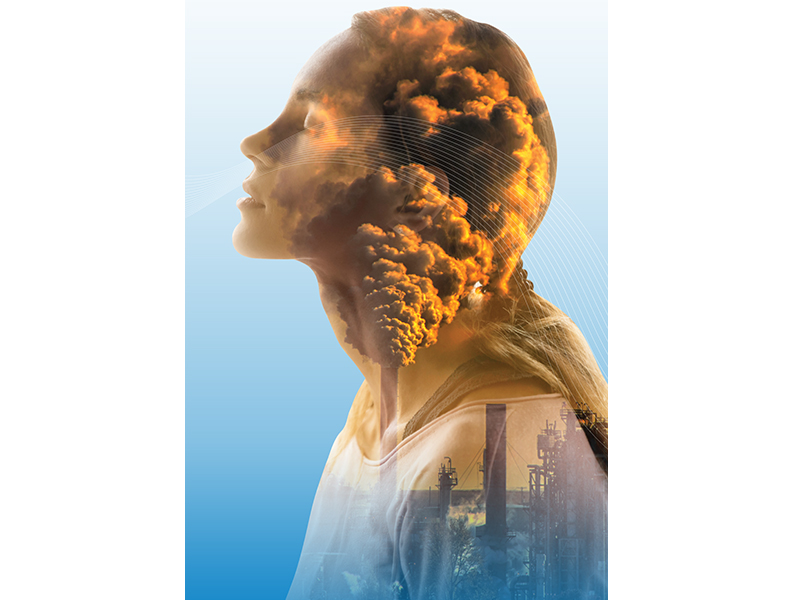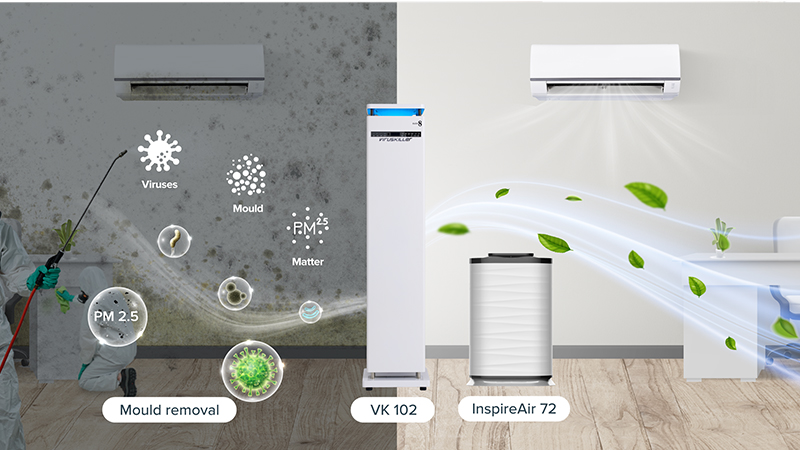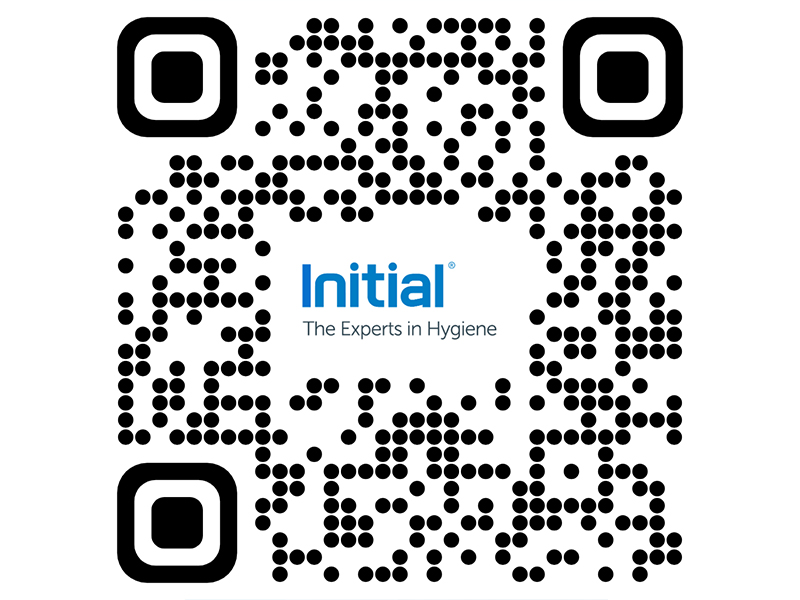From an air purifier to a mould remover, there are ways you can help create a healthier home environment for yourself and your family. We asked the team from Initial Hygiene and Rentokil about how to improve your indoor air quality in your Singapore home.
Dealing with mould, VOCs and airborne particles
It’s something that’s often overlooked, yet the air we breathe indoors can have a significant impact on our health. Indoor air pollution levels in homes, workplaces and school classrooms are typically much higher than outdoor pollution levels, escalating to 100 times worse in certain cases!

Alarming statistics like these highlight the importance of addressing indoor air quality, especially considering that, for most of us, the vast majority of our time is spent indoors. This prolonged exposure to poor indoor air quality creates a health risk, even more so for children, the elderly and those with chronic respiratory diseases.
While PM2.5, VOCs and other airborne particles are widely recognised pollutants, the presence of mould often goes unnoticed. Yet it poses significant health risks. A mould remover is as important as managing other indoor air pollutants to enhance air quality and foster healthier living spaces.
Health impacts of poor indoor air quality
In Singapore, the National Environment Agency (NEA) monitors indoor air quality and publishes reports on its findings. According to the NEA, poor indoor air quality can contribute to a range of health impacts, including respiratory infections, asthma, allergies, cardiovascular disease and cancer.
Is the air quality in your home making you sick?
If you’re still experiencing sickness and coughing despite having an air purifier, there could be two main reasons:
#1 Inadequate air purification coverage
Not all air purifiers are designed to cover large spaces effectively. For instance, if your device doesn’t have enough capacity to purify the air in your entire room, contaminants may still linger. Consider upgrading to one of the following two models:
The InspireAir72 by Initial Hygiene offers a Clean Air Delivery Rate (CADR) of up to 600 cubic metres per hour, and can provide coverage for up to 72 square metres. It utilises a multilayer filter system, including a medical-grade HEPA 13 filter with 99.95 percent filtration efficiency, ensuring comprehensive air purification. It also provides real-time information on various air-quality metrics and adapts to changing conditions through its auto-sensor and dynamic modes.
The Viruskiller 102 is equipped with award-winning technology designed to eliminate 99.9999 percent of viruses, including coronaviruses. With a coverage area of 165 square metres, it employs a combination of washable pre-filters, carbon filters and HEPA filtration to capture and remove airborne contaminants effectively. Additionally, its unique UV-C and TiO2 (Titanium Dioxide) reactor chamber targets and destroys remaining pathogens, ensuring thorough air purification.
#2 Persistent root causes
Even with an effective air purifier, if the root cause of indoor air pollution persists, such as mould infestations, you may continue to experience health issues. Consider addressing these underlying concerns with one of the following professional services:
Mould Remediation by Mouldgone: Mouldgone offers a comprehensive mould inspection and FDA- and CDC- approved non-toxic treatments that act as a mould remover. With a child- and pet-safe approach and a 180-day warranty, It ensures a mould-free environment, promoting healthier indoor air quality.
Aircon Mould Remediation by HealthyAir: HealthyAir specialises in air-conditioning mould remediation, providing free evaluations and tailored recommendations for a clean and efficient air-conditioning system. Their FDA-approved treatment and after-service reports guarantee improved air quality and comfort.
By addressing both the coverage and root cause issues, you can significantly improve indoor air quality and reduce the risk of respiratory issues and illnesses. From mould remediation to air purifiers, these solutions can literally offer a breath of fresh air, ensuring a healthier and more comfortable living environment at home.
Fill in this form for more information, or scan the QR code below.
5 facts about indoor air quality
- 90 percent of our time is spent indoors (US Environmental Protection Agency – EPA)
- Indoor air quality is generally 2 to 5 times worse than outdoor quality (American Lung Association)
- 50 percent of diseases are aggravated or caused by polluted indoor air (American College of Allergies, Asthma & Immunology)
- Occupants at higher risk include children, the elderly and those with chronic respiratory disease (EPA)
- On average, we inhale 11,000 litres of air per day
Despite the relatively clean outdoor air quality indicated by IQAir, Singapore has an Air Quality Index of 47, and data from Dyson’s Connected Purifier study reveals that Singapore ranks fourth globally for having poorer indoor air quality compared to outdoor air quality. This study highlights that indoor PM2.5 levels in Singapore are, on average, 36 percent higher than outdoor PM2.5 levels, emphasising significant indoor air pollution concerns.
Call 6347 8138 for more information on indoor air quality solutions.







